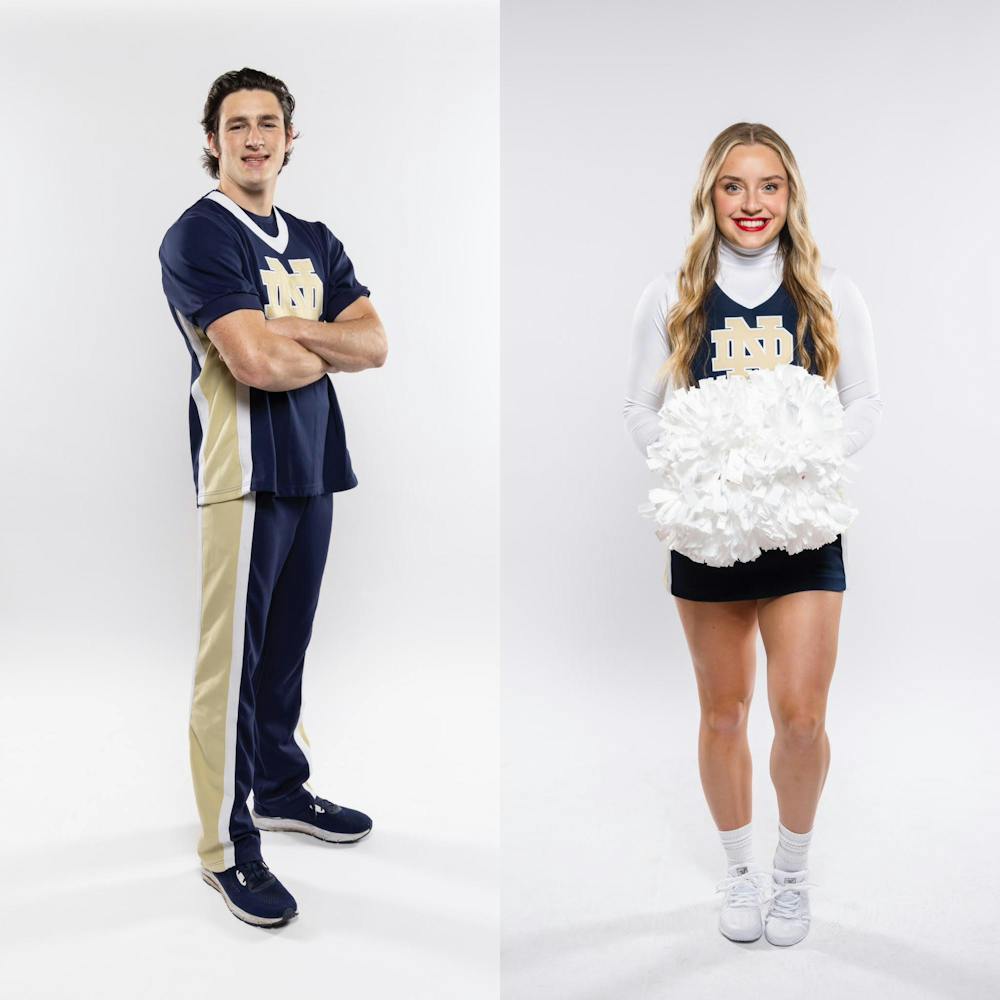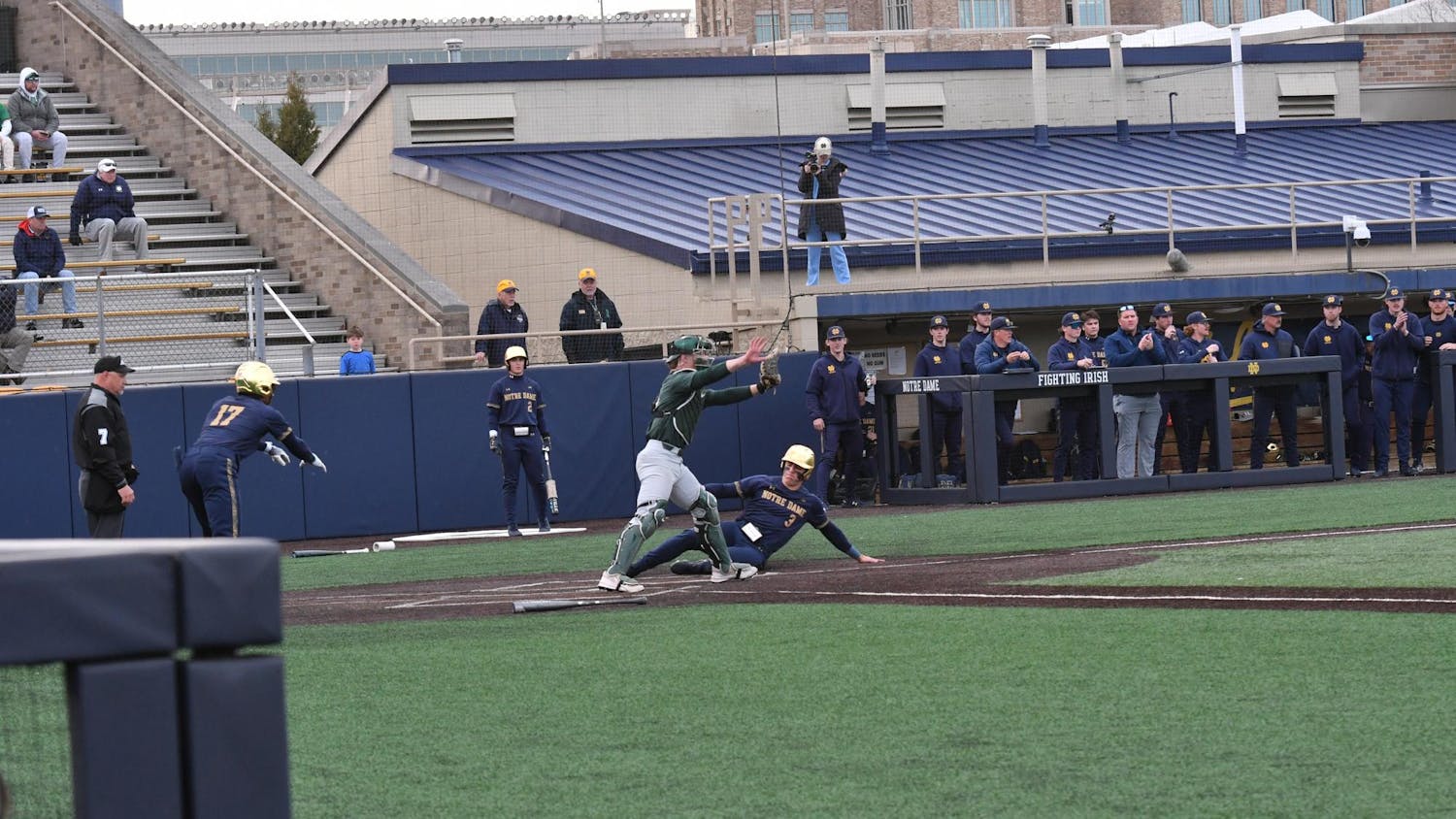Tim Yuro is going to miss putting smiles on people’s faces.
The graduate student, who joined the Notre Dame cheerleading team at the end of his freshman year in 2020, said his college experience would not have been nearly the same without “cheer.”
“I would not have as deep of an appreciation for the school without it because we’ve gotten to see every single aspect that the school could possibly offer,” he added.
Yuro’s friends ask him if he regrets not getting to tailgate at football games or go on spring break due to cheer commitments.
“Thinking back, I wouldn’t trade it for anything,” Yuro said. “If I could do it over again, I would. Easily.”
Kelsey Crawford is in the same boat.
The senior joined the cheer team at the beginning of her freshman year. She said not seeing her teammates every day following graduation will be a “weird routine.”
Originally a gymnast, Crawford said she wasn’t serious about cheerleading until her mom, who cheered at Ohio University, made her go to a cheer clinic in high school.
“I was convinced that I was going to hate it, and then I went and loved it,” Crawford said, adding that she has “stuck with” cheer ever since.
Yuro, who played soccer and wrestled in high school, said he gave cheer a try because someone in his dorm invited him to a practice.
Crawford and Yuro served as captains of the Notre Dame cheerleading team this school year.
The cheer team regularly roots on three sports: football, basketball and volleyball. Cheerleaders attend all away football games and travel for postseason basketball games.
Yuro and Crawford said there’s nothing quite like being an Irish cheerleader on the day of a Notre Dame football game. The cheerleaders report to the stadium as many as six hours before kickoff, warm up and then head out to tailgates to engage with fans.
Crawford said seeing little kids in cheer uniforms makes her day.
“There have been cheerleaders that have gotten jobs from connecting with alumni at tailgates,” she added.
Yuro’s favorite part of game day is the “pregame lineup,” which happens right before the team runs onto the field and the playing of the national anthem, he said.
Thanks to a donation, the cheer team was able to attend UCA College Nationals, which takes place every January in Florida, for the first time last school year. Crawford said competing at nationals is now “worked into” the team’s yearly budget.
“Now aside from cheering the championships that these other sports have, we have our own thing to push ourselves for,” Yuro said.
Yuro and Crawford said members of the cheer team had two overarching goals this school year. One was strengthening the sense of community within the team. Crawford said attending nationals helped accomplish this. “Sports teams are always like families,” she added.
The other was representing Notre Dame as best they could. Yuro said that included giving people “that game day experience,” as well as putting smiles on people’s faces while serving in the local community and at donor events.
Since cheerleaders have to interact with strangers frequently at tailgates, Crawford said she learned a “different way” of connecting with people throughout her time cheering.
Yuro, who never cheered before college like most men on the team, said learning cheer stunts is more about being coachable than being strong.
Unlike students on other sports teams, Yuro mentioned that no one on the cheer team receives an athletic scholarship.
“We are just there doing what we love,” Crawford explained.
Yuro and Crawford agreed that they are excited to watch the cheerleaders perform during a home football game as casual observers.
“We’ve seen the program grow with us in it, so now we can watch from the outside and come back and visit and see how far they’ve come since we left,” Crawford said.
When asked about how the spirit of Notre Dame differs from the school spirit of other universities, Yuro said Notre Dame sports fans aren’t just enthusiasts of Irish athletics.
“It’s not just the team they’re rooting for,” he said. “It’s the whole school — what it embodies.”










